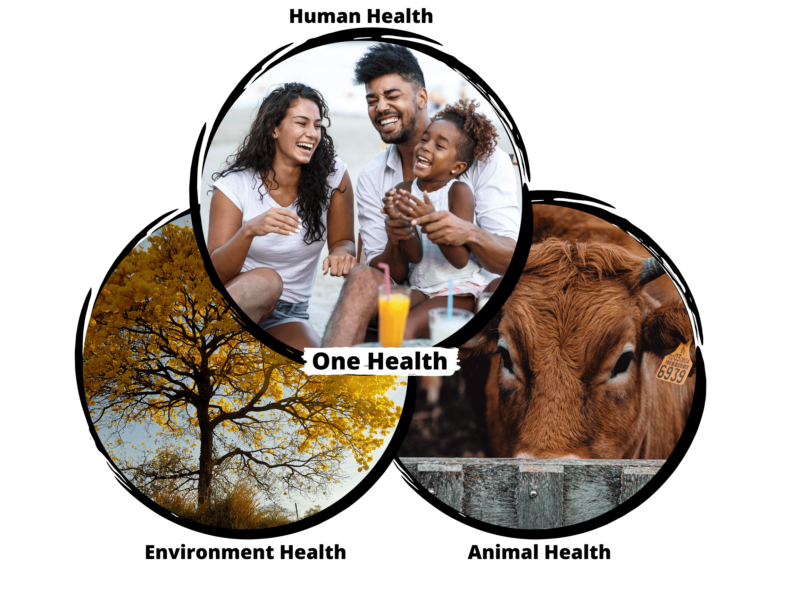
What is the One Health approach?
The One Health approach is a unifying approach that aims to balance and optimize the health of people, animals, and the environment to attain optimal health for people. It recognizes that the health of humans is interconnected with the health of animals, wildlife, and the environment. By adopting a collaborative and interdisciplinary approach, the One Health concept addresses key issues such as zoonotic diseases, antimicrobial resistance, and nutritious food production.
This unifying approach brings together experts from various health sectors to work towards health and welfare for animals and people alike. Organizations such as the World Organisation for Animal Health (OIE), the Food and Agriculture Organization (FAO), and the Centers for Disease Control and Prevention support the One Health approach at both national and global levels.
At We-Empower, we support the One Health initiative which encourages world-wide collaborations in all aspects of health care for humans, animals and the environment (1). Our goal is to actively participate in implementing the outcomes and recommendations of scientific discoveries in developing countries with limited resources.
Proper management of available resources is one of the major obstacle in implementing health strategies in developing societies
Global Health is an important part of One Health concept as more than 60% of infectious diseases in humans originate from animal hosts (2, 3). Many emerging diseases of humans and animals are assumed to be maintained in reservoir hosts (4) even though those hosts are rarely identified.
In the past few years, many emerging disease threats have been handled through large-scale destruction of suspected animal disease reservoirs, and many times, actions are taken on the basis of the perceived threat of an emerging disease.
For example, millions of cows were slaughtered in the United Kingdom to control an epidemic of bovine spongiform encephalopathy (mad cow disease) (5), and millions of chickens were slaughtered in Hong Kong to prevent a projected pandemic of influenza A virus infection (6).
At We-Empower, we support the One Health initiative which encourages world-wide collaborations in all aspects of health care for humans, animals and the environment (1). Our goal is to actively participate in implementing the outcomes and recommendations of scientific discoveries in developing countries with limited resources.
Proper management of available resources is one of the major obstacle in implementing health strategies in developing societies
Global Health is an important part of One Health concept as more than 60% of infectious diseases in humans originate from animal hosts (2, 3). Many emerging diseases of humans and animals are assumed to be maintained in reservoir hosts (4) even though those hosts are rarely identified.
In the past few years, many emerging disease threats have been handled through large-scale destruction of suspected animal disease reservoirs, and many times, actions are taken on the basis of the perceived threat of an emerging disease.
For example, millions of cows were slaughtered in the United Kingdom to control an epidemic of bovine spongiform encephalopathy (mad cow disease) (5), and millions of chickens were slaughtered in Hong Kong to prevent a projected pandemic of influenza A virus infection (6).
COVID-19 Pandemic
Two possible origins of the Coronavirus (SARS-CoV-2) are proposed by the scientists (7). The virus emerged in Wuhan, China during 2019 may have evolved to its current pathogenic state through an intermediate host, as previous coronavirus outbreaks emerged. For example, humans contracted the virus after direct exposure to civets (SARS) and camels (MERS). The researchers proposed bats as the most likely reservoir for SARS-CoV-2 as it is very similar to a bat coronavirus.
Other possibility is coronaviruses from pangolins, which are armadillo-like mammals found in Asia and Africa, having structure very similar to that of SARS-CoV-2 may have transmitted the virus to human, either directly or through an intermediary host such as civets or ferrets.
The researchers at the Paul G Allen School for Global Animal Health at Washington State University (WSU) (8) and others are studying the animal-human disease interface to help prevent emerging diseases.
Dr. Mushtaq Memon, We-Empower Vice President for Livestock and Professor Emeritus was a founding faculty member of the School for Global Animal Health at WSU, and is actively involved in international development.
To implement the One Health strategy, a broad-based collaboration is needed, including human and animal health professionals. At We-Empower, we are able and willing to work with all stakeholders to implement sustainable strategies for healthy people, animals and the planet.
Neglected diseases in developing countries
According to the World Health Organization, neglected diseases are hidden diseases as they affect extremely poor populations living in remote areas beyond the reach of traditional health services (9). In addition to Malaria and tuberculosis, many parasitic diseases, such as Lymphatic filariasis, sleeping sickness, etc. are responsible for poor health in many developing countries.
Investing in drugs for these diseases is thought to be not marketable or profitable. Despite their low mortality, neglected diseases cause severe and permanent disabilities and deformities affecting approximately 1 billion people in the world. Urgent pragmatic and efficient measures are needed both at international and national levels (9).
Foodborne diseases
Food security, a commonly used phrase in international development means – meeting the demand of a growing world population for food. Protein as an important part of food is made of amino acids.
The animal-origin protein (milk, meat, fish, eggs) contribute significantly to meeting the human need for amino acids (10) as well as some important trace nutrients (e.g. Ca, P, Zn, Fe, I, Se, and vitamins A, D, E, B12), especially for children and juveniles as well as pregnant and lactating women (11).
Brucellosis is a disease of mainly cattle, sheep, goats, pigs and camels. Consumption of raw (unpasteurized) milk and cheese made from raw milk (fresh cheese) is a major source of infection in humans (12).
The most rational approach for preventing human brucellosis is the control and elimination of the infection in animals. Pasteurization of milk is another protective mechanism. Vaccination of cattle is recommended for control of bovine brucellosis in enzootic areas with high prevalence rates. The same holds true for goat and sheep brucellosis.
Antibiotics residue in milk
Antibiotics are used to treat bacterial diseases, and residues of these antibiotics may enter the milk supply from the treated animals. Regulations for use of antibiotics require that milk from treated animals withdrawn from sale for a prescribed time.
When proper procedures for use of a drug and withdrawal of the milk are not followed, milk containing drug residues may be sent to the marketplace. Residual antibiotics in milk can seriously affect consumers’ health causing allergic reactions and developing resistant strains (13, 15), therefore good quality milk must contain no harmful or toxic residues, such as antimicrobial drugs. Milk in markets in most of the developing countries is not tested for antibiotic residues.
Milk quality test
Milk composition varies depending upon the species (cow, goat), breed (Holstein, Zebu), the animal’s feed and the stage of lactation. In general, the gross composition of cow’s milk in the United States is about 87.7% water, 4.9% lactose (carbohydrate), 3.4% fat, 3.3% protein, and 0.7% minerals (referred to as ash) (14).
High somatic count in milk indicates low quality milk. Mastitis (udder inflammation) is one of the most common disorders in dairy cows which is the result of a bacterial infection. The infection causes an increase in milk somatic cell levels (blood cells that fight infections).
In the United States, the limit for Grade “A” milk is 750,000 cells per milliliter (ml), somatic cell counts (SCC) exceeding 2-300,000 generally indicate some level of mastitis in the herd. High SCCs can result in quality defects in raw milk and processed dairy products due to increased enzyme activity associated with the infection and somatic cells.
These enzymes break down proteins, fats and other components resulting in reduced yields in cheese and flavor defects (e.g. bitterness, rancidity) in cheese and possibly pasteurized fluid milk and other products, if counts are sufficiently high. SCCs are determined by approved automated counting systems (e.g., flow cytometry) and by the Direct Microscopic Somatic Cell Count (15).
In most of the developing countries, milk is sold on the basis of fat percentage/or ‘solids not fat’. In the United States, the milk quality is assessed on the basis of SCC and the total number of viable bacteria present in raw milk (16).
At We-Empower, we are committed to assist global poor communities in acquiring food security and food safety under the auspices of One Health.
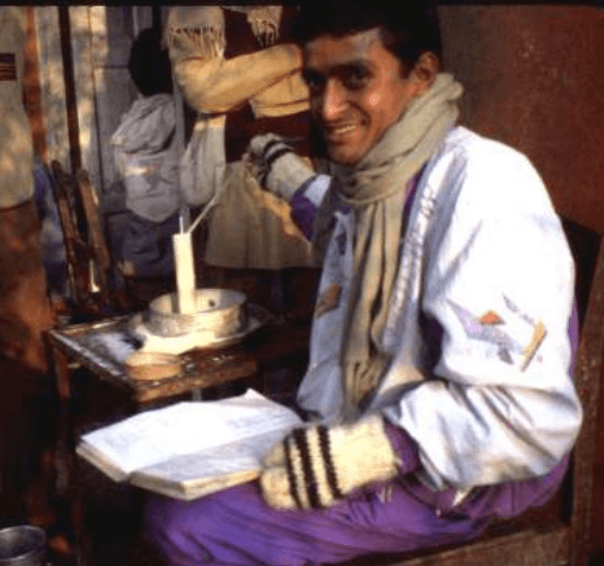

In Nepal, the milk quality is tested on the basis of fat percentage and total ‘solids not fat’ (A) at the milk collection site, and check for acidity (B) of the milk is performed at the milk plant. No somatic cell count or antibiotic residues are checked.
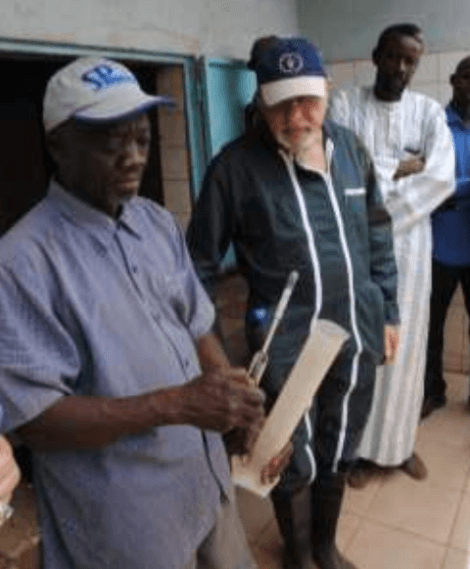
In Mali, milk is tested for specific gravity. Specific gravity of normal milk is 1.028 to 1.032. Specific gravity of water is one. Hence, addition of water to milk tends to decrease the specific gravity of milk
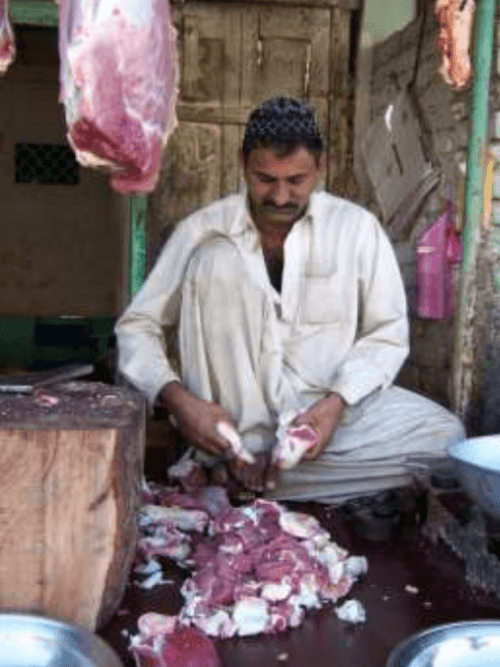
Proper hygiene (A – butcher holding knife between his toes to cut meat), and hand milking in unhygienic environment (B) are common practices in Pakistan
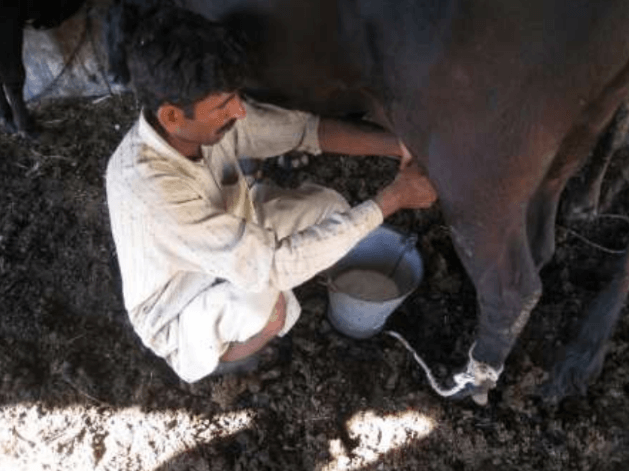
Proper hygiene (A – butcher holding knife between his toes to cut meat), and hand milking in unhygienic environment (B) are common practices in Pakistan
One Health Initiative will unite human and veterinary medicine
This Initiative is a groundbreaking movement that will bring together human and veterinary medicine for the greater good. By emphasizing early detection and a health joint plan of action, the One Health Commission aims to advance the One Health approach globally.
Through collaboration among professionals in both fields, we can reduce the spread of diseases and improve the health and safety of both animals and our shared environment.
By promoting global One Health activities and incorporating a One Health quadripartite approach, we can address potential health risks stemming from various sources, including ecosystems, international travel and trade.
Food security in the One Health era
Food security is a critical issue that impacts not only our present well-being but also the future health of our planet. In the One Health era, it is essential that we come together and develop a one health joint plan to address the diseases that can spread between animals and humans.
By promoting the one health approach that recognizes the spread of health issues at both regional and global levels, organizations such as the United Nations Environment Programme, American Medical Association, and American Academy of Pediatrics are taking action on climate to reduce the health risks associated with food insecurity. Let’s work together to ensure a healthier future for all.
FAQ
Q: What is the One Health Initiative?
A: It’s an approach that aims to sustainably address health challenges by recognizing the interconnections between human health, animal health, and environmental health.
Q: Why is the One Health Initiative important?
A: It is important because it emphasizes the need for collaboration across multiple sectors, disciplines, and communities at varying levels of society to work together towards optimal health outcomes for people, animals, and the environment.
Q: What are some examples of One Health issues?
A: One Health issues may include the spread of zoonotic diseases between animals and humans, ensuring food and water safety, and addressing global health threats that impact both people and animals.
Q: How does the One Health Initiative team work together?
A: The team collaborates across sectors such as public health, animal health and welfare, and environmental health to address health and environmental challenges holistically.
Q: What is the role of the One Health high-level expert panel?
A: The One Health high-level expert panel provides leadership and guidance in developing strategies and solutions for complex health issues that require a multidisciplinary approach.
Q: How does the One Health concept benefit society?
A: The One Health concept benefits society by promoting a holistic approach to health that considers the interconnectedness of people, animals, and the environment, leading to improved health outcomes and sustainable practices.
Q: What are some global health risks that the One Health Initiative aims to address?
A: The One Health Initiative aims to address global health risks such as emerging infectious diseases, antimicrobial resistance, and environmental degradation that impact human, animal, and ecosystem health.
References
(1) One Health initiative. http://www.onehealthinitiative.com/index.php Assessed April 6, 2020.
(2) Memon MA, Xie S. Prospects for collaboration between the veterinary professions in the United States and China. J Am Vet Med Assoc. 242: 1632- 1634, 2013.
(3) Taylor LH, Latham SM, Woolhouse MEJ. Risk factors for human disease emergence. Philos Trans R Soc Lond B Biol Sci 356:983–989, 2001.
(4) Cleaveland SC, Laurenson MK, Taylor LH. Diseases of humans and their domestic mammals; pathogen characteristics, host range and the risk of emergence. Philos Trans R Soc Lond B Biol Sci 356:991–999, 2001.
(5) Donnelly CA, Ferguson NM, Ghani AC, et al. The epidemiology of BSE in cattle herds in Great Britain. 1. Epidemiological processes, demography of cattle and approaches to control by culling. Philos Trans R Soc Lond B Biol Sci 352:781–801, 1997.
(6) Vogel G. Infectious disease: sequence offers clues to deadly flu. Science 279:324, 1998.
(7) Anonymous. COVID-19 coronavirus epidemic has a natural origin. Science News, March 17, 2020. https://www.sciencedaily.com/releases/2020/03/200317175442.htm Assessed April 6, 2020.
(8) Anonymous. Paul G Allen School for Global Animal Health. https://globalhealth.wsu.edu/research/zoonotic-disease Assessed April 6, 2020.
(9) Boutayeb A. Developing countries and neglected diseases: challenges and perspectives. Int J Equity Health. Published online 2007 Nov 26. doi: 10.1186/1475-9276-6-20 https://www.ncbi.nlm.nih.gov/pmc/articles/PMC2206025/ Assessed April 6, 2020.
(10) Joint FAO/WHO/UNU Expert Consultation on Protein and Amino Acid Requirements in Human Nutrition (2002: Geneva, Switzerland), Food and Agriculture Organization of the United Nations, World Health Organization & United Nations University. (2007). Protein and amino acid requirements in human nutrition: report of a joint FAO/WHO/UNU expert consultation. World Health Organization. https://apps.who.int/iris/handle/10665/43411 Assessed April 7, 2020.
(11) Reynolds LP, Wulster-Radcliffe MC, Aaron DK, et al. Importance of animals in agricultural sustainability and food security. J Nutr 145:1377–1379, 2015.
(12) Anonymous. Brucellosis. Zoonosis. World Health Organization https://www.who.int/zoonoses/diseases/brucellosis/en/ Assessed April 6, 2020.
(13) Sachi S, Ferdous J, Sikder MH, et al. Antibiotic residue in milk: Past, present, and future. J Adv Vet Anim Res 6: 315-332, 2019.
(14) Anonymous. Milk Composition. http://milkfacts.info/Milk%20Composition/Milk%20Composition%20Page.htm Assessed April 6, 2020.
(15) Raw milk quality tests. Dairy Food Science Notes, Cornell University. https://foodsafety.foodscience.cornell.edu/sites/foodsafety.foodscience.cornell.edu/files/shared/docu ments/CU-DFScience-Notes-Milk-Raw-Tests-Summary-07-08.pdf Assessed April 6, 2020.
(16) Anonymous. How milk quality is assessed. Dairy Cattle, August 16, 2019. https://dairy-cattle.extension.org/how-milk-quality-is-assessed/ Assessed April 6, 2020.
